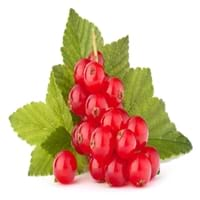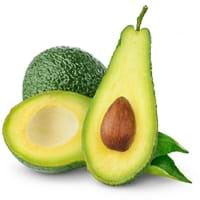Health Benefits
Cancer prevention, Gout treatment, Heart care, Regulation of heart rate, Treatment of rheumatism
Cancer prevention, Natural detoxification, Osteoporosis prevention, Protection from chronic disease
General Benefits
Anti oxidant properties, Controls blood pressure, Cures fever, Digestive aid, Healing of wounds, Helps in weight loss, Strengthens bones
Boosts immune system, Controls blood pressure, Digestive aid, Improves eye vision, Maintains healthy cholesterol level
Skin Benefits
Brightens and lightens complexion, Reduces wrinkles, Treatment of acne
Brightens and lightens complexion, Reduces wrinkles, Skin cleansing, Treatment of dark spots
Hair Benefits
Protects hair
Acts as moisturizer, Good conditioner, Protects hair, Regulates hair growth, Rejuvenates scalp, Remedy for split ends, Shiny hair, Softening mask
Allergy Symptoms
Abnormally rapid heart rate, Anaphylaxis, Breathing difficulty, Hives, Itching, Swallowing difficulties
Abdominal pains, Anaphylaxis, Inflammation, Itching, Latex Allergy, Nasal congestion, Skin Rashes, Swallowing difficulties, Swelling, Upset stomach, Vomiting, Wheezing
Side Effects
Possibly unsafe during pregnancy
Allergic reaction, Hypersensitivity, Weight gain
Best Time to Eat
Best if taken as a breakfast (or empty stomach), As a snack in the late afternoon, Don't eat after meal, Morning time (before lunch)
Along with meal, As a snack in the late afternoon, Don't consume at night and before bed, Don't eat after meal
Vitamin B5 (Pantothenic Acid)
Vitamin C (Ascorbic Acid)
Vitamin K (Phyllochinone)
Phytosterol
Not Available
Calories in Fresh Fruit with Peel
Calories in Fresh Fruit without Peel
Not Available
Not Available
Calories in Frozen Form
Not Available
Calories in Canned Form
Not Available
Not Available
Type
Berry
Berry, Tree fruit, Tropical
Varieties
Rovada, Stanza, Red Lake, Junifer and Jonkheer van Tets
Bacon, Fuerte, Gwen, Hass, Lamb Hass, Pinkerton, Reed and Zutano
Origin
Europe
Mexico, Central America
Soil Type
Moist, Well-drained
Decomposed Granite, Limestone, Sandy loam, Well-aerated
Climatic Conditions
Cold
Humid, Without frosts
Facts about
- The albino version of red currants known as white currants, are often sold as different fruit.
- Red currant tea is healthy substitute for coffee.
- There are more than 150 varieties of red currants.
- The oldest living avocado tree is found in University of California and was planted in 1879.
- Avocados can be swapped for butter in Baked Goods Recipes.
- Avocado ripens more quickly with a banana or an apple around.
Top Producer
Russia
Mexico
Other Countries
Belgium, France, Germany, Ireland, Italy, Netherlands, Poland, Portugal, Scotland, Spain, Sweden, United Kingdom
Chile, China, Colombia, Dominican Republic, Indonesia, Kenya, Mexico, Peru, Rwanda, United States of America
Top Importer
Germany
United States of America
Top Exporter
Russia
Mexico
Botanical Name
Ribes rubrum
Persea Americana
Synonym
Not Available
Persea Gratissima
Subkingdom
Tracheobionta
Tracheobionta
Division
Magnoliophyta
Magnoliophyta
Class
Magnoliopsida
Magnoliopsida
Subclass
Rosidae
Magnollidae
Order
Saxifragales
Laurales
Family
Grossulariaceae
Lauraceae
Species
R. rubrum
P. Americana
Generic Group
Saxifrage
Laurel
Difference Between Red Currant and Avocado
We might think that Red Currant and Avocado are similar with respect to nutritional value and health benefits. But the nutrient content of both fruits is different. Red Currant and Avocado Facts such as their taste, shape, color, and size are also distinct. The difference between Red Currant and Avocado is explained here.
The amount of calories in 100 gm of fresh Red Currant and Avocado with peel is 56.00 kcal and 160.00 kcal and the amount of calories without peel is Not Available and Not Available respectively. Thus, Red Currant and Avocado belong to Low Calorie Fruits and High Calorie Fruits category.These fruits might or might not differ with respect to their scientific classification. The order of Red Currant and Avocado is Saxifragales and Laurales respectively. Red Currant belongs to Grossulariaceae family and Avocado belongs to Lauraceae family. Red Currant belongs to Ribes genus of R. rubrum species and Avocado belongs to Persea genus of P. Americana species. Beings plants, both fruits belong to Plantae Kingdom.









